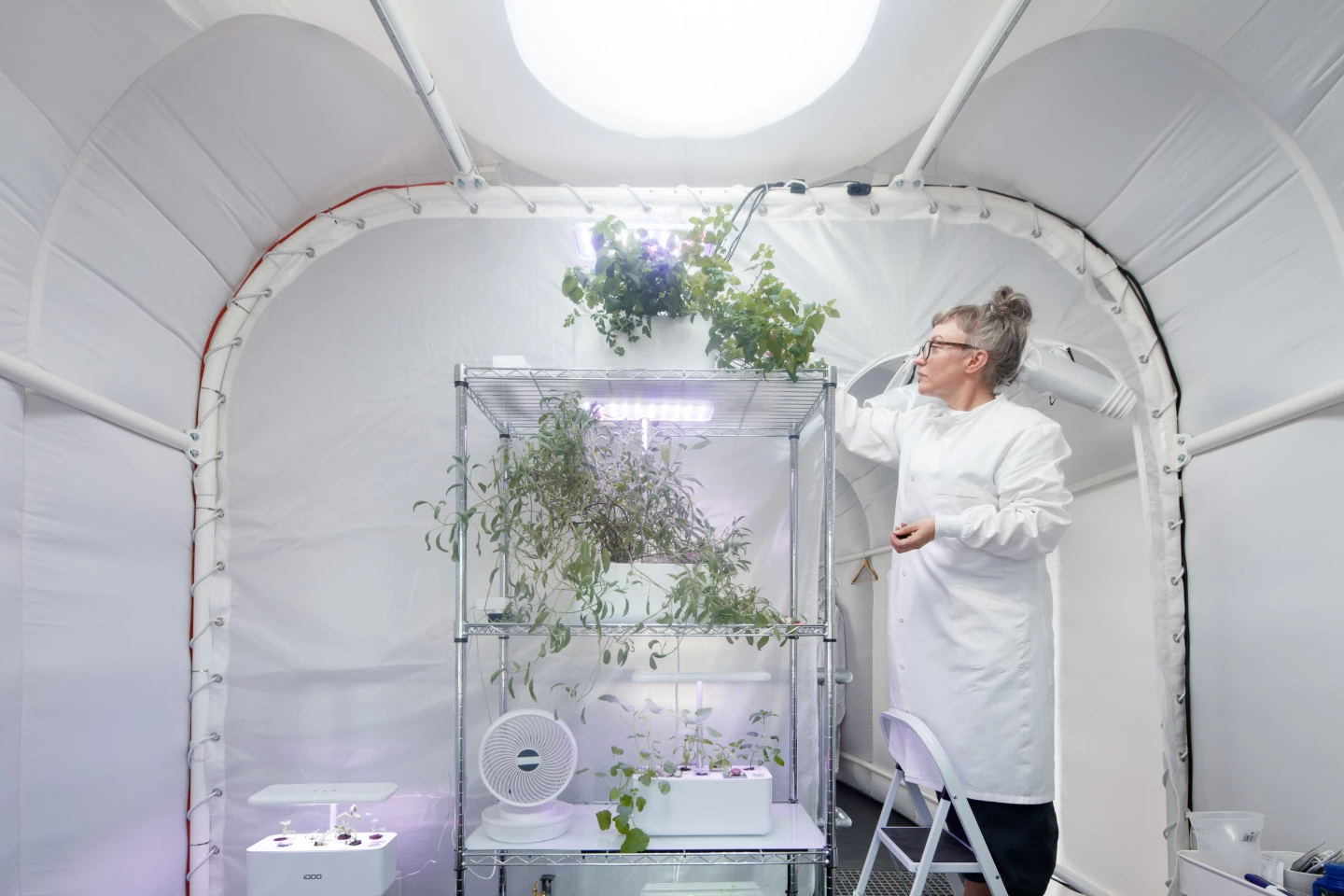If humanity is ever going to colonize Mars, we'll need somewhere for astronauts to live in safety. With this in mind, polar base specialist Hugh Broughton Architects is harnessing its expertise sheltering humans in the harshest conditions on our planet to offer food for thought on what form future Mars habitats could take.
The Martian House was unveiled back in 2020 and is the brainchild of artists Ella Good and Nicki Kent. In addition to Hugh Broughton Architects, the project involved a big team including designers Pearce+, Professor Lucy Berthoud, Dr Robert Myhill and Professor James Norman from University of Bristol, plus others. The building is installed in Bristol, England, and is part public art installation and part scientific research project.
It measures 53 sq m (570 sq ft) and is powered by solar panels. Its overall design is intended to be lightweight and able to withstand the environmental challenges that would be faced on a real trip to Mars, such as extreme temperature fluctuations, wind, and radiation. The idea is that the lower floor's walls would be filled with soil and buried into the Martian landscape to aid insulation, though this prototype mode is made from a shipping container, so it can be easily reused. The upper level consists of pressurized inflatable gold-coated foil created by specialists Inflate.

The interior includes a hydroponic living room, where occupants are surrounded by plants to aid relaxation and support a healthy diet. Elsewhere lies an "environmental control room" with life support systems, plus there are two compact bedroom pods, a shower, and a Martian toilet designed by Duravit, the prize winner of the NASA Lunar Loo competition. The design will continue to be developed with input from volunteers, with ideas on everything from furniture to Martian clothes, toothbrushes and even wallpaper. The focus will be on creating items that are easy to repair, multi-functional, and create zero waste.
"This is the first Martian House to receive a building consent [in the UK] and it is so exciting to see it built in Bristol," said Hugh Broughton, director of the firm. "The design draws upon principles developed for extreme environments on earth overlaid with solutions to the logistic and environmental challenges of building on Mars, which we have developed with the help of space scientists. It is a prototype, intended to challenge people's perceptions of what life on Mars might be like and to provide a canvas for them to suggest their own ideas to make the house as comfortable and welcoming as possible."
The Martian House prototype will officially open to the public on August 31, until October 30. Hugh Broughton Architects is certainly not the only studio interested in creating out-of-this-world architecture, however. High-profile names like BIG and Foster + Partners are also involved, with 3D printing a big focus in their approach.
Source: Hugh Broughton Architects








